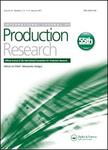版权所有:内蒙古大学图书馆 技术提供:维普资讯• 智图
内蒙古自治区呼和浩特市赛罕区大学西街235号 邮编: 010021

作者机构:Department of Industrial Engineering and Operations Research Automation and Robotics Laboratory 215 Marston Hall University of Massachusetts Amherst Massachusetts 01003 USA
出 版 物:《INTERNATIONAL JOURNAL OF PRODUCTION RESEARCH》 (国际生产研究杂志)
年 卷 期:1990年第28卷第3期
页 面:517-540页
核心收录:
学科分类:12[管理学] 120202[管理学-企业管理(含:财务管理、市场营销、人力资源管理)] 0202[经济学-应用经济学] 02[经济学] 1202[管理学-工商管理] 1201[管理学-管理科学与工程(可授管理学、工学学位)] 0802[工学-机械工程]
基 金:Digital Equipment Corporation National Science Foundation, NSF, (DMC-8610417)
主 题:ASSEMBLY line methods INDUSTRIAL robots ROBOTICS PLANNING ELECTRONIC data processing ARTIFICIAL intelligence COMPUTER-aided design COMPUTERS SOLID geometry
摘 要:SUMMARYSUMMARYAn automatic planning system for robotic assembly must have knowledge of the workspace. In particular it must be capable of reasoning about the shape of objects within the workspace. This requires a knowledge of object features and their behaviour in assembly situations. In this paper, a system is presented which extracts features relevant to assembly and machining from a boundary model derived from a Constructive Solid Geometry representation of a complex shape. In particular, finding concavities plays an important role in identifying possible mating features for assembly. These relevant features can then be used for assembly planning based on finding compatible sets of mating features. In this work the CAD data is extracted from a boundary model represented in an ASCII file and converted into the data-structures of the AI language, Prolog.